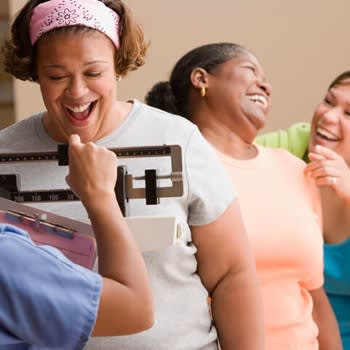Essential Core Exercises for Seniors
- Learn about the importance of core strength and some simple core strengthening exercises to keep abdominal muscles strong and healthy as you age.
Your core is your center of gravity. It's the group of muscles that help you balance and stay upright, and it’s involved in almost every movement. That's why it's so important to keep your core strong.
The core encompasses the area from the rib cage to the pelvis and hips and includes the muscles supporting the spine.
Core muscles naturally deteriorate, shrink and become less flexible over time. This weakening can begin as early as your mid-30s unless you take active steps to reverse it. However, it’s never too late to begin, as targeted exercises can help resist the effects of aging and improve your core strength in your senior years.

Learn More About Medicare
Join our email series to receive your free Medicare guide and the latest information about Medicare.
By clicking "Sign me up!" you are agreeing to receive emails from HelpAdvisor.com
Thanks for signing up!
Your free Medicare guide is on the way.
Make sure to check your spam folder if you don't see it.
How Can Seniors Strengthen Their Cores?
Regularly participating in resistance training is the best way to strengthen your core. This form of activity involves the muscles working against a force or weight, whether from equipment like dumbbells or resistance bands or your bodyweight. As the muscles work, they become stronger over time.
If you’re new to working out, doing some type of resistance training two or three times each week helps you build your core. You may opt to exercise more frequently as you become fitter and stronger, but try to leave at least 48 hours between sessions to allow your muscles to rest.
Before starting a new fitness regime, you should also chat with a medical professional, such as a doctor or physiotherapist.
What Are 3 Exercises That Strengthen the Core?
Here are some simple exercises that can strengthen your core:
Chair Planks
Planks are commonly performed on the floor, but it can be challenging for older adults to get into position. A chair variation is easier for most people and still an effective transverse abdominal workout.
Here are the steps:
- Move a sturdy chair against a wall, with the seat facing you.
- Face the chair and bend down to put the heels of your hands on the edge of the seat, near the corners of the chair’s front legs.
- Walk your feet back until your head, shoulders, hips, and feet are in a line, forming a plank.
- Adjust your feet, so you feel comfortable.
- Unlock your elbows and look forward. If you look down, your hands should sit in a direct line underneath your shoulders. Squeeze your heels together.
- Engage your core, drawing your belly button up towards your spine. Hold the position for as long as you can.
- After a brief rest, repeat the plank. Try to perform between 3 to 5 chair planks.
- Once you can hold chair planks for a minute or more, see whether you can transition to regular planks on the floor to work your core.
Seated Knee Lifts
Seated knee lifts work your lower and transverse abdominal muscles from a stable position. This makes them an excellent exercise for people concerned about falling.
Follow these simple steps:
- Sit tall on a chair near the end of the seat. Imagine a piece of string running down from your hips and pulling you up from the top of your head. This can encourage better posture.
- Engage your lower abdominal muscles and lift one knee. Hold it 3 or 4 inches off the ground for around 5 seconds before lowering it back to the ground.
- Lift your other knee and repeat the exercise.
- Repeat the exercise, switching between legs until you have raised each knee 6 to 8 times. Work up to 10 to 12 repetitions on each knee.
- If you feel confident performing seated knee lifts, you could try standing knee lifts.
Wood Chops
Wood chops are an easier standing exercise that needs no equipment. They also strengthen virtually every core muscle while helping you improve your balance.
Here’s how to do them:
- Stand with your hands clasped in front of you and your feet slightly wider than shoulder-width apart.
- Move your arms up and over to one side of your head as if you are lifting an imaginary ax.
- Squat as low as you comfortably can, with your knees over your ankles. At the same time, move your arms down to the opposite side of your body as if you are bringing down the ax to chop some wood.
- Stand up and take your arms back to the side of your head.
- Do 5 wood chops on one side, then change, so your arms are moving from the other side of your body.
- As your fitness improves, you could increase the difficulty by holding a small dumbbell in your clasped hands.
Why Should Seniors Exercise Their Core?
Exercising the core helps combat the aging process. As people become older, they tend to slow down and sit more often, and a sedentary lifestyle can further diminish your core.
The best way to strengthen the core is to exercise. Without a stable core, you may struggle with everyday activities, such as lifting items and walking up stairs.
As the core anchors your spine in place, you’re more likely to experience back pain and injuries when it’s weak. Your risk may be greater if you’re carrying extra weight, have poor posture, or suffer from conditions such as osteoporosis or arthritis.
Your core also keeps you stable. When you work on your core, you’ll notice that your posture improves, and you feel steadier on your feet. Additionally, you're less likely to experience falls with a stable core. For this reason, strengthening your core could even improve your longevity.
A Strong Core Helps Keep You Healthy
Staying fit and active is the best way to combat the effects of time and keep your core healthy in your senior years.
Add core strengthening exercises to your workout routine to reduce the risk of pain and injury and allow you to live life to the fullest.



